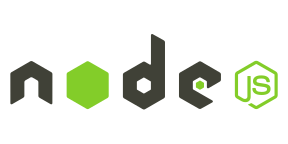Microservices testing combines QA activities to ensure that each microservice works appropriately. It ensures that its failure doesn’t result in severe functional disruptions of the entire software and that all microservices smoothly function as one application. Data driven testing is a method of creating test scripts in which test data or output values are read from data files rather than using the same hard-coded values. To achieve greater coverage from a single test, you can run the same test case with different inputs. Canary Testing is a technique used to detect any issues or bugs and minimize the risk of introducing new changes or updates to a production environment.

It involves modifying a program in small ways, creating mutant versions of a program, and assessing the original version’s ability to detect these mutants. Load Testing is a way to determine how well a system, software product, or application can handle multiple users using it at one time. Cross Browser Testing allows you to verify your application’s compatibility with different browsers. It’s essential to any development process because it ensures that your product works for all users, regardless of their browser preferences.
Beta testing
Software testing can be conducted as soon as executable software (even if partially complete) exists. The overall approach to software development often determines when and how testing is conducted. For example, in a phased process, most testing occurs after system requirements have been defined and then implemented in testable programs. In contrast, under an agile approach, requirements, programming, and testing are often done concurrently. The process of software testing aims not only at finding faults in the existing software but also at finding measures to improve the software in terms of efficiency, accuracy, and usability.
- It helps different hardware components attached to these devices to communicate with the operating system and other applications so that the components can function.
- In trying to comprehend the future scope of Software Testing, it is important to understand that future of Software Testing will inevitably be conditioned by the upcoming technologies and the needs of the time.
- There are various methods you can use to test your code, and each testing method has different requirements.
- This is evident in the rising demand for individuals who can write as well as test codes.
- Software testing is important because poor quality software can damage an organization’s reputation and result in financial losses.
- To use syntax testing we must first describe the valid or acceptable data in a formal notation such as the Backus Naur Form, or BNF for short.
- The word Application in this context refers to any software with a distinct function.
Because of its efficiencies, automated testing is a key component of continuous integration and continuous delivery. However, there are use cases, such as evaluating an app’s visual elements (colors, font, sizes, button sizes, etc.), one-time testing, or testing small changes, where its limitations make manual testing a better choice. In the following sections, we’ll explain the different types of software testing, their role in software development, and why it’s important. We’ll also explain software testing’s benefits and best practices so you can get the most out of your testing efforts. Automated testing helps teams implement different scenarios, test differentiators (such as moving components into a cloud environment), and quickly get feedback on what works and what doesn’t. Even a simple application can be subject to a large number and variety of tests.
Compatibility Testing
Passive testing means verifying the system behavior without any interaction with the software product. Contrary to active testing, testers do not provide any test data but look at system logs and traces. They mine for patterns and specific behavior in order to make some kind of decisions.[17] This is related to offline runtime verification and log analysis.

When we talk about Automation Testing being the force of the future, the emphasis will definitely shift towards Codeless Test Automation. This idea is based on facilitating business users as well as testers to automate test cases without necessarily being proficient in coding. Automation Testing has been held to be beneficial in shortening the testing cycle by providing for faster product delivery. Moreover, it helps to provide for greater test coverage and early detection of bugs. It might include testing for first impressions, time on page, trust, comparison and so on. The objective is to identify possible defects and consequently improve upon them.
Top-Down Integration
This means that the way the user interacts with the application is predetermined prior to developing the product. Then you’ll check your code to verify that it actually performs what it’s been what is syntax testing programmed to do. Validation testing is studying and verifying the specific requirements of a particular development stage to ensure that the final product meets customer expectations.
How to Sustain Quality and Velocity in a JavaScript or TypeScript … – InfoQ.com
How to Sustain Quality and Velocity in a JavaScript or TypeScript ….
Posted: Fri, 20 Oct 2023 11:26:33 GMT [source]
The purpose of retesting is to ensure that the changes made to the software have not introduced any new defects or bugs and that the previously identified defects have been properly fixed. It is ported from the JUnit framework and aids in writing tests using the .NET language. Batch execution of tests can be performed through the NUnit-console.exe console runner, which helps load and explores tests with the help of the NUnit Test Engine. Mutation testing is a software testing technique used to evaluate the quality of existing software tests.
Test Scripts are Actual Users.
Each specific thing some software can be used for can be described with a concrete example. Quality refers to the conformance to implicit or explicit requirements, expectations, and standards. The Page Object Model is a design pattern that creates an object repository for storing all web elements.

Many companies employ DevOps testing strategies, starting with the agile practice of Continuous Integration. Of course, plenty of work makes the deliverable possible, but it isn’t itself a deliverable, such as testing modules or researching the best way to do something. A decision table is an excellent tool for testing and requirements management.
Syntax Testing
Test cases are built around specifications and requirements, i.e., what the application is supposed to do. It uses external descriptions of the software, including specifications, requirements, and designs to derive test cases. These tests can be functional or non-functional, though usually functional. The combination of Agile and DevOps practices creates a culture of continuous testing that emphasizes the importance of quality throughout the software development lifecycle. It enables the early detection of defects and the ability to respond quickly to changes in requirements, ensuring that software is delivered on time and meets the needs of end-users.
It identifies mission-critical issues at the earliest, so you can fix them before delving into finer details. Extreme Programming, commonly known as “XP” based on the initials extreme programming —is an agile method focused on software development. While scrum focuses on prioritizing work and getting feedback at the project management level, XP focuses on software development best practices. Therefore, there will be a lot of software references in the following discussion. In addition, XP values and practices can be applied to other knowledge work projects.
Software Testing: A Beginner’s Guide
In software development, a traceability matrix is a table-type document used to track requirements. In addition to forward tracing (from requirements to design or coding), it can also be used backward tracing (from coding to requirements). Alternatively, it is called Requirement Traceability Matrix (RTM) or Cross Reference Matrix (CRM). However, automated test suites are suitable since they can be repeated repeatedly without a human being manually clicking and typing through the application. In addition, automated tests stop false results from cropping up due to human error. It allows test developers to develop new versions of a test based on different populations at the item level.

Leave A Comment